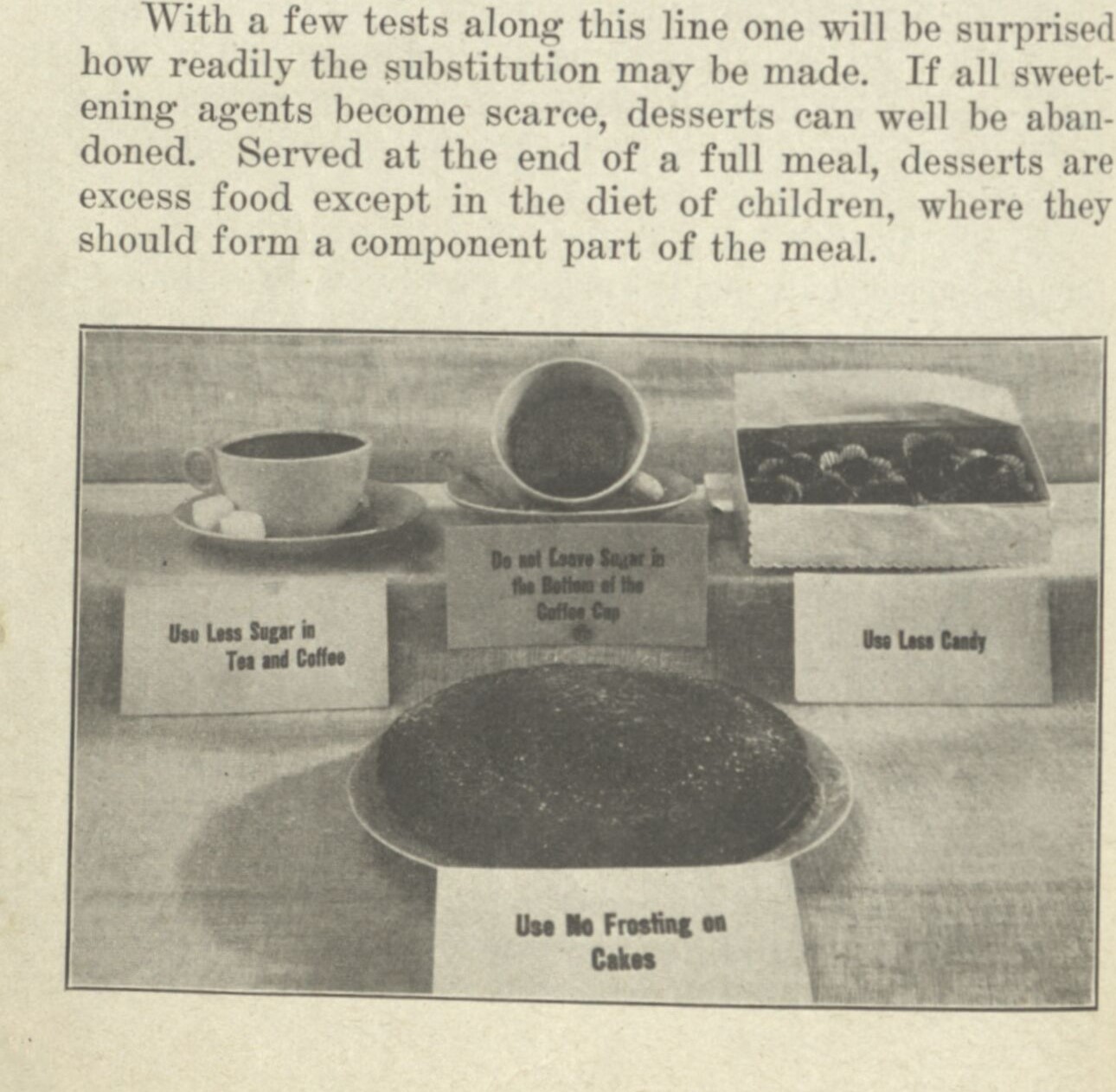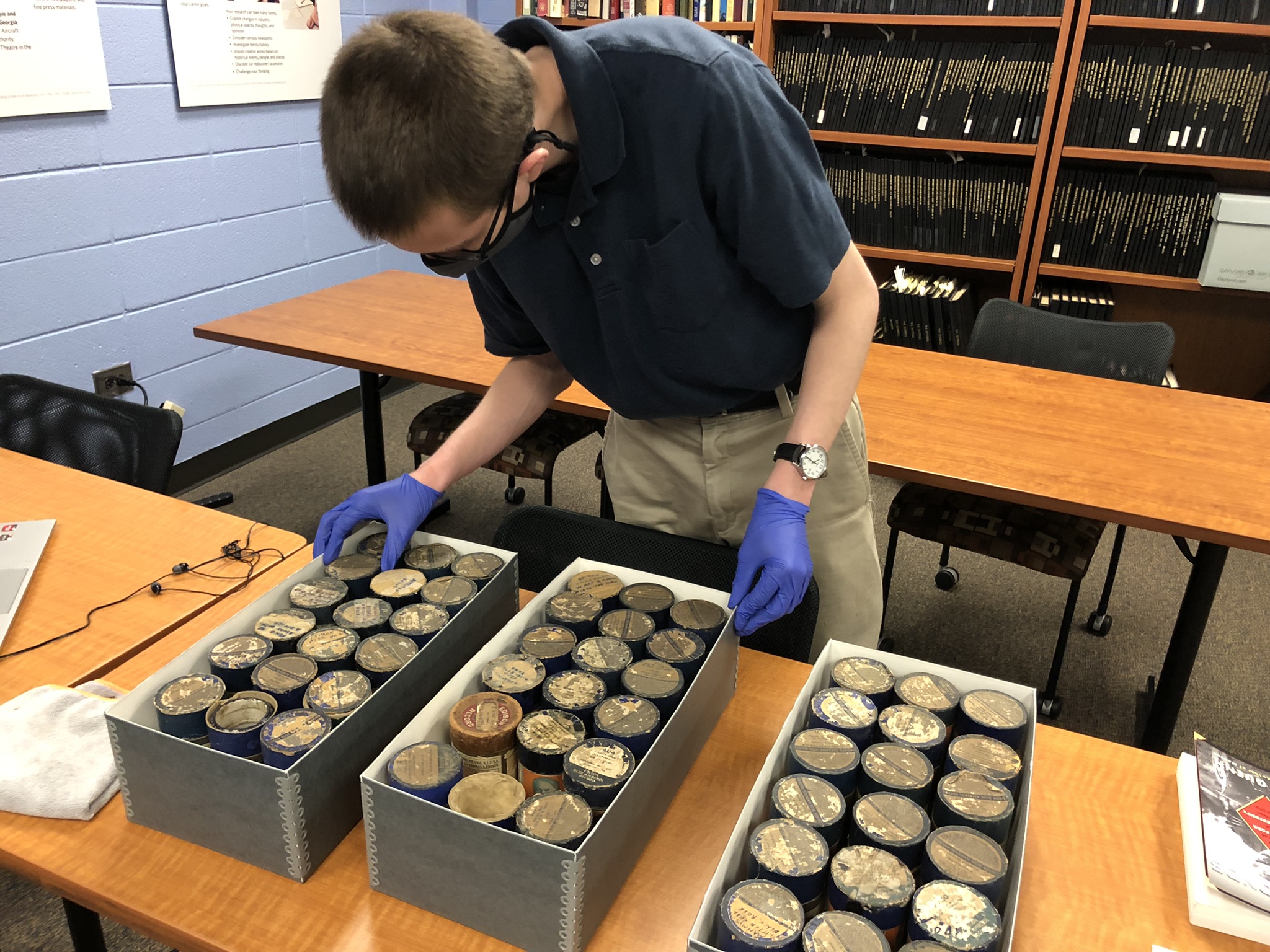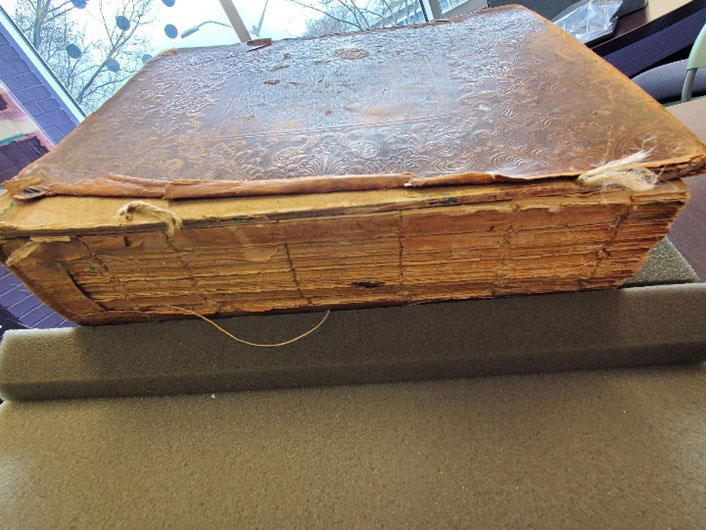
The Stacks Magnified: Examining an Issue of "Frederick Douglass' Paper"
KENNESAW, Ga. | Aug 6, 2021
Bentley Museum volunteer Andrew Bramlett analyzes an 1854 issue of "Frederick Douglass' Paper."
In 1818, Frederick Douglass was born an enslaved man in Maryland and was the property of several owners during his early life. One of them taught him the alphabet, and he was soon able to read. In 1838, Douglass escaped into Delaware before traveling to New York. Article IV, Section 2, Clause 3 of the US Constitution said that an enslaved person in a free state was not free, but often escaped slaves were treated as free in the North.
After a move to Massachusetts, Douglass became involved in the Abolitionist movement. He gained notoriety, and in 1847 founded The North Star, an abolitionist newspaper. The North Star was named after Polaris, a bright star slaves often used to find their way North without a compass. After a merger in 1851 with the Liberty Party Paper, another abolitionist publication, The North Star was renamed Frederick Douglass’ Paper.
One edition of Frederick Douglass’ Paper, from February 17, 1854, is in the collection of the Bentley Rare Book Museum. This edition of the paper covers many abolitionist topics, along with some discussion about women’s rights. The articles reveal the state of slavery, and the nation, had changed significantly since Douglass’ escape in 1838.

In order to ease the tension the war had caused between the pro-slavery and anti-slavery factions, a compromise had to be found. Called the Compromise of 1850, one of the most controversial aspects the legislation was the Fugitive Slave Act, which required authorities to return escaped slaves to their masters. The bills were passed, but the Fugitive Slave Act remained controversial until the start of the Civil War, especially because this was seen as a government endorsement of slavery.
The Fugitive Slave Act is covered in a “runaway slave” advertisement on the front page of the Bentley Rare Book Museum’s edition of Frederick Douglass’ Paper. The advertisement tells the story of Edward Derby, a “mulatto man” who claimed to be free but was suspected of being a runaway slave, and subsequently arrested. An article accompanying the ad, originally from the Rochester Daily Democrat, condemns the person who captured Derby and who falsely claimed Derby was a slave. The article states that “if our Southern friends will persist in arresting free colored men, we submit that they should adopt measures to protect them from unlawful claimants.” The article also mentions residents of Rochester raised enough funds for Derby to be freed from the jail where he was being held. While Derby’s capture has a happy ending, not all free Blacks kidnapped under the Fugitive Slave Act had the same satisfying conclusion to their stories.
There was a Douglas who was a major supporter of the Compromise of 1850, but this is not the same man as Frederick Douglass. This Douglas is Stephen Douglas of Illinois, a Northerner with Southern sympathies. This Douglas’ last name had one less “S” than his abolitionist contemporary.
In Frederick Douglass’ Paper, an article can be found titled “Douglas, the Nebraska Bill, and the Administration.” The Nebraska Bill referred to in the title is the Kansas-Nebraska Act, which allowed territories captured during the Mexican-American War to decide whether or not they wanted to be slave or free states. It is referred to in another article from the paper as the “Nebraska villainy.”
While the cotton gin was gaining in popularity, many still hoped slavery could be abolished in America. Many of these same people felt, however, that free Blacks could not co-exist the in same country with their former masters. In order to solve this dilemma, groups were formed to bring newly freed enslaved people back to Africa. One of the largest groups formed was the American Colonization Society, which was strongly supported by President Monroe. The society was able to establish the country of Liberia and transported

While the idea of Liberia ultimately failed, many still felt colonization was the only way to deal with free Blacks. One of the articles in Frederick Douglass’ Paper was simply titled “Colonization,” and was written by a Chicago resident. It argued for Liberia and colonization, saying it “proved that the African is still a man, despite the crushing weight of Slavery and contumely which have been resting upon him for six or eight generations.” Several pages later, an ad is found for a “Call for a National Emigration Convention of Colored Men.” The convention, to be held in Cleveland, would be for those who wanted a colony for free Blacks, but in the Americas instead of overseas.
Douglass published his paper until 1863, but he returned to the industry with a new paper in 1870. He suffered a fatal heart attack in 1895 and was buried in Rochester, New York.
Frederick Douglass played an integral role in the Abolitionist movement prior to the Civil War. The Bentley Rare Book Museum’s edition of his newspaper from February of 1854 highlights the growing Abolitionist movement and foreshadows war a little over five years away.
Images of Frederick Douglass and map of Liberia are courtesy of the Library of Congress.
Sources:
Balkansky, Arlene. “Frederick Douglass Newspapers, 1847-1874: Now Online.” Frederick Douglass Newspapers, 1847-1874: Now Online | Headlines and Heroes, Library of Congress, 17 Jan. 2020, blogs.loc.gov/headlinesandheroes/2020/01/frederick-douglass-newspapers-1847-1874-now-online/.
Brands, H. W. Heirs of the Founders: Henry Clay, John Calhoun and Daniel Webster, the Second Generation of American Giants. Anchor Books, a Division of Penguin Random House LLC, 2019.
Cobb, James C. “Behind the History of the Fugitive Slave Act.” Time, Time, 18 Sept. 2015, time.com/4039140/fugitive-slace-act-165/.
“Frederick Douglass.” PBS, Public Broadcasting Service, www.pbs.org/wgbh/aia/part4/4p1539.html.
Gosse, Van. The First Reconstruction: Black Politics in America from the Revolution to the Civil War. The University of North Carolina Press, 2021.
Greenberg, Amy S. A Wicked War: Polk, Clay, Lincoln, and the 1846 U.S. Invasion of Mexico. Vintage Books, a Division of Random House, Inc., 2013.
History.com Editors. “Compromise of 1850.” History.com, A&E Television Networks, 27 Oct. 2009, www.history.com/topics/abolitionist-movement/compromise-of-1850.
History.com Editors. “Frederick Douglass.” History.com, A&E Television Networks, 27 Oct. 2009, www.history.com/topics/black-history/frederick-douglass.
History.com Editors. “Kansas-Nebraska Act.” History.com, A&E Television Networks, 29 Oct. 2009, www.history.com/topics/19th-century/kansas-nebraska-act.
Schur, Joan Brodsky. “Eli Whitney's Patent for the Cotton Gin.” National Archives and Records Administration, National Archives and Records Administration, 23 Sept. 2016, www.archives.gov/education/lessons/cotton-gin-patent.
















